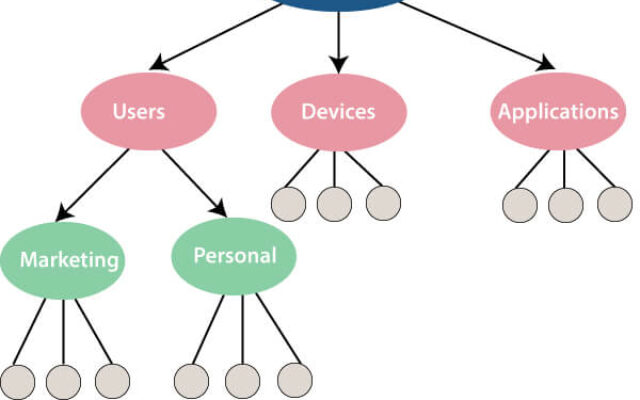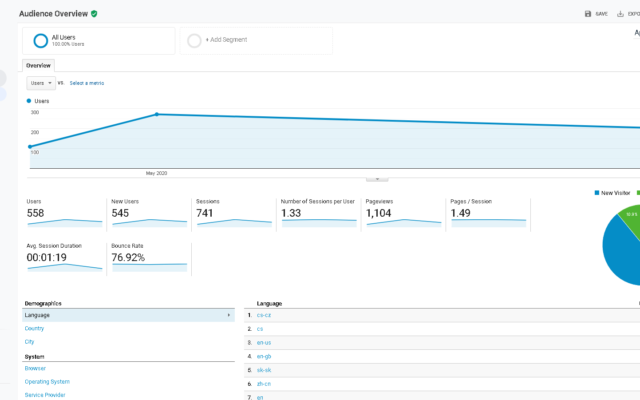
What is MySQL – MySQL for Beginners
If you are interested in technology and want to understand it more easily, you have come to the right place. We create a guide for you on the basics of data, web creation, and marketing. What is MySQL? What does every company use it for?
What is MySQL?
The first thing we need to know is the pronunciation. MySQL is pronounced in English as My-S-Q-L [maɪˌɛsˌkjuːˈɛl]. Very often, you will hear people use: my-sickle or other terms. The official name is My-S-Q-L. MySQL is a product of a Swedish company that named the program MySQL in 1994. Later, in 2008, the American company Sun Microsystems bought MySQL. The entire Sun Microsystems company was purchased by the technology giant Oracle in 2010. Since then, MySQL has been owned by Oracle.
MySQL is an open-source database system (RDBMS). It is based on the Structured Query Language (SQL). MySQL runs practically on all platforms, including Linux, UNIX, and Windows. Although MySQL is usable in a variety of projects, it is most commonly associated with databases and online presentation.
MySQL is an important part of the open-source enterprise complex called LAMP. LAMP is a platform for developing web applications that uses the Linux operating system, Apache as the web server, MySQL as the relational database management system, and PHP as the object-oriented scripting language. (Sometimes Perl or Python is used instead of PHP.)

Database
Simply put, a database is a collection of data that is structured in any form. It's like taking photos. Individual photos are data stored in a database called a Gallery. In the gallery, photos are stored and sorted. Databases work the same way. You have data that needs to be organized and structured into a “gallery”. Another known term, relational database, means: The data we store is sorted by given variables and then visualized into tables. Each table is actively connected to the database. If our software does not support relational databases, we simply call it DBMS.
MySQL was originally developed for fast processing of large databases. Although MySQL is typically installed on only one computer, it can send the database to multiple locations, where users can access it through various MySQL client interfaces. These interfaces send SQL commands to the server and display the results.
Open Source
Open source means that the user can use and modify the program for free. Anyone can use MySQL. You can also learn how to customize commands. These modifications help users work efficiently and easily. These modifications help you create your version of MySQL that you make specifically for you and your project. However, there is GPL (GNU Public License), which defines how to work with the program under certain conditions. A commercial license for the program is also available if you need more flexibility in rights and developer support.
Client-Server Model
Devices that have RDBMS applications installed and running are called clients. Whenever a user needs access to data, they must connect to the RDBMS server. This part is called client-server.
MySQL is one of many options for RDBMS. RDBMS and MySQL are often considered synonymous due to the popularity of MySQL. MySQL is used by giants like Facebook, Google, Twitter, YouTube, and Yahoo!. All these projects store their data thanks to MySQL. Due to its compatibility, MySQL has become a market leader. MySQL will run on Linux, macOS, Windows, or Ubuntu.
The core of MySQL is the MySQL server, which handles all database instructions (or commands). The MySQL server is available as a standalone program for use in a client-server network environment, but also as a database that can be embedded (or linked) into standalone applications.
MySQL works together with several utilities that support the management of MySQL databases. Commands are sent to the MySQL server via the MySQL client, which is installed on the computer.
SQL
MySQL and SQL are not the same. Remember, MySQL is one of the most popular RDBMS software that implemented the client-server model. How does the client communicate with the RDBMS environment? They use their own programming language. The English name is Structured Query Language (SQL). If you have ever encountered names like: PostgreSQL or Microsoft SQL Server, you now know that these programs also use Structured Query Language (SQL). RDBMS software is usually written in other programming languages but always uses SQL as the main language for communicating with the database. MySQL itself is written in C and C++.
Computer specialists and programmers Donald D. Chamberlin and Raymond F. Boyce developed SQL in the early 1970s. They used IBM's relational model. SQL started to be more widely used in 1974 and quickly replaced similar but old and inefficient programming languages like ISAM and VISAM. Moving from history to practice, SQL tells the server what to do with the data. It's like WordPress login. When you log in, you get access to the main dashboard. In the case of SQL, commands guide the server to perform certain operations.
- Data query: Requesting specific information from the database.
- Data manipulation: Adding, deleting, modifying, sorting, and other operations that change data and their attributes.
- Data identity: Defining data types, such as changing from numerical sequences to integers. These operations define the schema and connections of tables and the database.
- Data access control: Adding security features to protect data. It includes who can view and use the information stored in the database.

How Does MySQL Work?
One or more devices, or clients, connect to the server. Each client can submit a request through a GUI – graphical user interface. This GUI appears on the screens of connected clients. The server then performs the requested operations under one condition. Both the client and the server must understand the command. This means the code written in SQL must be correct. Simply put, the main processes in the MySQL environment remain the same:
- MySQL creates a database to store and manipulate data. It defines individual relationships between tables.
- The client can send SQL code that requests changes in the MySQL database.
- The server responds with the requested information, which then appears on the client's side.
All this is important. The simpler the GUI environment you create, the faster you will work in it. Remember that this environment can also be used by someone who does not know how to work with SQL and MySQL. Often, this interface is used by marketing specialists to obtain information. The most popular interfaces include: MySQL WorkBench, SequelPro, DBVisualizer, and others. Some are even free! Others are mainly used for commercial purposes, and some are built only for macOS. When deciding which environment to use, think about what you need from the project. For example, If you want to build a website using WordPress, the simplest and most commonly used system is phpMyAdmin.
Why is MySQL So Popular?
MySQL is not the only RDBMS system on the market. However, it is one of the most popular. Along with Oracle Database, it competes for the top spot in key metrics such as search results, how many professionals use the software, or the frequency of discussions on online forums. MySQL has earned its popularity. So why do large companies and organizations use MySQL? Here are a few reasons:
Flexible and Simple
You can customize commands according to your needs and expectations. You do not have to pay for this freedom. Nor for the option to upgrade to the commercial version of the program, which opens up more advanced options. The entire installation can be completed in thirty minutes!
High Performance
A wide range of servers supports MySQL. Whether you are storing large amounts of data from, for example, an e-shop or performing analytical activities, MySQL will always help you with quick and accurate interactions.
Standard of Today
Businesses have been using MySQL for years! Recently, we also see MySQL being taught in schools that are not specialized in ICT. MySQL is becoming a modern necessity for working with a PC. Thanks to MySQL's popularity, we can find thousands of guides and tutorials on how to learn MySQL.
Security
Your data and data security should be your priority when using RDBMS software. MySQL has raised expectations for RDBMS programs. MySQL uses a Privilege System and User Account Management. Host-based authentication and password encryption are now standard.




